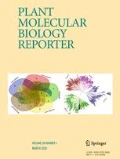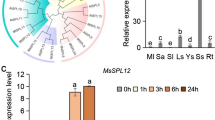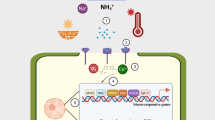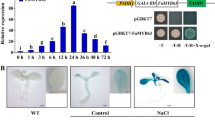Abstract
Zinc deficiency is a common problem leading to severe decreases in grain yield and has detrimental effects on nutritional quality in cereals. Wild emmer wheat, Triticum turgidum ssp. dicoccoides, exhibits a potential genetic resource for wheat improvement due to its compatibility with modern wheat. In this study, Zn deficiency response of wild progenitors and modern wheat were examined using molecular and physiological approaches with plants grown under various Zn concentrations. The results revealed wide variation in response to Zn deficiency between wild emmer accessions. Among the wild emmer accessions studied, accession MM 5/4 was found to be most tolerant and accession 19–36 was the most sensitive to Zn deficiency. To better understand Zn transport mechanisms in wild emmer wheat, we analyzed the expression patterns of a ZRT/IRT-like gene, Zrt-, Irt-like protein (ZIP)1, in the roots and shoots of several accessions that were maintained on different concentrations of Zn. Quantitative real-time polymerase chain reaction results revealed that ZIP1 transcript levels are elevated with decreasing Zn supply in all accessions. Particularly, ZIP1 transcript accumulation was lower in the roots of accession MM 5/4 while the susceptible, 19–36 accession, has elevated levels of ZIP1 transcript, revealing a Zn deficiency response for this genotype. We also identified and cloned a full-length ZIP1 transporter, named TdZIP1, and further analyzed the corresponding protein sequence for structural attributes. Under Zn deficiency, deleting the last 20 amino acids from the last transmembrane domain of TdZIP1 and tagging with GFP resulted in endoplasmic reticulum localization. Functional expression of the isolated TdZIP1 using Zn-uptake defective Saccharomyces cerevisiae strains on limiting Zn media showed that it could indeed transport Zn. However, overexpression of this transporter causes excess accumulation of Zn in the cells, thus generating a toxic environment. Overall, our results indicate the possibility of using Triticum dicoccoides for the genetic improvement of zinc deficiency tolerance in wheat.






Similar content being viewed by others
References
Altschul SF et al (1997) Gapped BLAST and PSI-BLAST: a new generation of protein database search programs. Nucleic Acids Res 25:3389–3402
Broadley MR, White PJ, Hammond JP, Zelko I, Lux A (2007) Zinc in plants. New Phytol 173:677–702
Budak H, Su S, Ergen N (2006) Revealing constitutively expressed resistance genes in Agrostis species using PCR-based motif-directed RNA fingerprinting. Genet Res 88(3):165–175
Burleigh SH, Kristensen B, Bechmann IE (2003) A plasma membrane zinc transporter from Medicago truncatula is up-regulated in roots by Zn fertilization, yet down-regulated by arbuscular mycorrhizal colonization. Plant Mol Biol 52:1077–1088
Cakmak I (2000) Role of zinc in protecting plant cells from reactive oxygen species. New Phytol 146:185–205
Cakmak I (2008) Enrichment of cereal grains with zinc: agronomic or genetic biofortification? Plant Soil 302:1–17
Cakmak I, Yılmaz A, Ekiz H, Torun B, Erenoglu B, Braun HJ (1996) Zinc deficiency as a critical nutritional problem in wheat production in Central Anatolia. Plant Soil 180:165–172
Cakmak I, Torun B, Erenoglu B, Ozturk L, Marschner H, Kalaycı M, Ekiz H, Yılmaz A (1998) Morphological and physiological differences in cereals in response to zinc deficiency. Euphytica 100:349–357
Cakmak O, Ozturk L, Torun B, Ozkan H, Kaya Z, Cakmak I (2001) Tolerance of 65 durum wheat genotypes to zinc deficiency in a calcareous soil. J Plant Nutr 24:1831–1847
Cakmak I, Torun A, Millet E, Feldman M, Fahima T, Korol A, Nevo E, Braun HJ, Ozkan H (2004) Triticum dicoccoides: an important genetic resource for increasing zinc and iron concentration in modern cultivated wheat. Soil Sci Plant Nutr 50:1047–1054
Cakmak I, Pfeiffer WH, McClafferty B (2010) Biofortification of durum wheat with zinc and iron. Cereal Chem 87:10–20
Choudhary M, Bailey LD, Grant CA, Leisle D (1995) Effect of Zn on the concentration of Cd and Zn in plant tissue of two durum wheat lines. Can J Plant Sci 75:445–448
Claros MG, von Heijne G (1994) TopPred II: an improved software for membrane protein structure predictions. Comput Appl Biosci 10:685–686
Connolly EL, Fett JP, Guerinot ML (2002) Expression of the IRT1 metal transporter is controlled by metals at the levels of transcript and protein accumulation. Plant Cell 14:1347–1357
Eide DJ (2000) Metal ion transport in eukaryotic microorganisms: insights from Saccharomyces cerevisiae. Adv Microb Physiol 43:1–38
Eide DJ (2006) Zinc transporters and the cellular trafficking of zinc. Biochim Biophys Acta 1763:711–722
Eide D, Broderius M, Fett J, Guerinot ML (1996) A novel iron-regulated metal transporter from plants identified by functional expression in yeast. Proc Natl Acad of Sci, USA 93:5624–5628
Eng BH, Guerinot ML, Eide D, Saier MH Jr (1998) Sequence analyses and phylogenetic characterization of the ZIP family of metal ion transport proteins. J Membr Biol 166(1):1–7
Ergen NZ, Budak H (2009) Sequencing over 13 000 expressed sequence tags from six subtractive cDNA libraries of wild and modern wheats following slow drought stress. Plant Cell Environ 32:220–236
Gaither LA, Eide DJ (2000) Functional expression of the human hZIP2 zinc transporter. J Biol Chem 275:5560–5564
Gaither LA, Eide DJ (2001) Eukaryotic zinc transporters and their regulation. Biometals 14:251–270
Galperin MY, Jedrzejas MJ (2001) Conserved core structure and active site residues in alkaline phosphatase superfamily enzymes. Proteins 45:318–324
Gietz RD, Woods RA (2002) Transformation of yeast by lithium acetate/single-stranded carrier DNA/polyethylene glycol method. Methods Enzymol 350:87–96
Gitan RS, Shababi M, Kramer M, Eide DJ (2003) A cytosolic domain of the yeast Zrt1 zinc transporter is required for its post-translational inactivation in response to zinc and cadmium. J Biol Chem 278:39558–39564
Graham RD, Ascher JS, Hynes SC (1992) Selecting zinc-efficient cereal genotypes for soils of low zinc status. Plant Soil 146:241–250
Grotz N, Fox T, Connolly E, Park W, Guerinot ML, Eide D (1998) Identification of a family of zinc transporter genes from Arabidopsis that respond to zinc deficiency. Proc Natl Acad Sci USA 95(12):7220–7224
Guerinot ML (2000) The ZIP family of metal transporters. Biochim Biophys Acta 1465:190–198
Guerinot ML, Grotz N (2006) Molecular aspects of Cu, Fe and Zn homeostasis in plants. Biochim Biophys Acta 1763:595–608
Hofmann K, Stoffel W (1993) TMbase—a database of membrane spanning protein segments. Biol Chem Hoppe Seyler 374:166
Korshunova YO, Eide D, Clark WG, Guerinot ML, Pakrasi HB (1999) The IRT1 protein from Arabidopsis thaliana is a metal transporter with a broad substrate range. Plant Mol Biol 40(1):37–44
Krogh A, Larsson B, von Heijne G, Sonnhammer EL (2001) Predicting transmembrane protein topology with a hidden Markov model: application to complete genomes. J Mol Biol 305:567–580
Leach MR, Cohen-Doyle MF, Thomas DY, Williams DB (2002) Localization of the lectin, ERp57 binding, and polypeptide binding sites of calnexin and calreticulin. J Biol Chem 277:29686–29697
Lopéz-Millán A-F, Ellis DR, Grusak MA (2004) Identification and characterization of several new members of the ZIP family of metal ion transporters in Medicago truncatula. Plant Mol Biol 54:583–596
Mann KJ, Sevlever D (2001) 1, 10-Phenanthroline inhibits glycosylphosphatidylinositol anchoring by preventing phosphoethanolamine addition to glycosylphosphatidylinositol anchor precursors. Biochemistry 40:1205–1213
Marschner H (1995) Mineral nutrition of higher plants, 2nd edn. Academic, San Diego
Nielsen H, Engelbrecht J, Brunak S, von Heijne G (1997) Identification of prokaryotic and eukaryotic signal peptides and prediction of their cleavage sites. Protein Eng 10:1–6
Nishida S, Mizuno T, Obata H (2008) Involvement of histidine-rich domain of ZIP family transporter TjZNT1 in metal ion specificity. Plant Physiol Biochem 46:601–606
Nishikawa SI, Fewell SW, Kato Y, Brodsky JL, Endo T (2001) Molecular chaperones in the yeast endoplasmic reticulum maintain the solubility of proteins for retrotranslocation and degradation. J Cell Biol 153:1061–1070
Pedas P, Schjoerring JK, Husted S (2009) Identification and characterization of zinc-starvation-induced ZIP transporters from barley roots. Plant Physiol Biochem 47:377–383
Peleg Z, Fahima T, Abbo S, Krugman T, Nevo E, Yakir D, Saranga Y (2005) Genetic diversity for drought resistance in wild emmer wheat and its ecogeographical associations. Plant Cell Environ 28:176–191
Peleg Z, Saranga Y, Yazici AM, Fahima T, Ozturk L, Cakmak I (2008) Grain zinc, iron and protein concentrations and zinc-efficiency in wild emmer wheat under contrasting irrigation regimes. Plant Soil 306:57–67
Pfaffl MW (2001) A new mathematical model for relative quantification in real-time RT-PCR. Nucleic Acids Res 29:2002–2007
Reid R, Hayes J (2003) Mechanisms and control of nutrient uptake in plants. Int Rev Cytol 229:73–114
Rengel Z, Graham RD (1996) Uptake of zinc from chelate-buffered nutrient solutions by wheat genotypes differing in Zn efficiency. J Exp Bot 47:217–226
Rengel Z, Römheld V (2000) Root exudation and Fe uptake and transport in wheat genotypes differing in tolerance to Zn deficiency. Plant Soil 222:25–34
Rogers EE, Eide DJ, Guerinot ML (2000) Altered selectivity in an Arabidopsis metal transporter. Proc Natl Acad Sci USA 97:12356–12360
Siedlecka A, Baszynsky T (1993) Inhibition of electron flow around photosystem I in chloroplasts of cadmium-treated maize plants is due to cadmium-induced iron deficiency. Physiol Plant 87:199–202
Tusnády GE, Simon I (1998) Principles governing amino acid composition of integral membrane proteins: applications to topology prediction. J Mol Biol 283:489–506
Vert G, Grotz N, Dedaldechamp F, Gaymard F, Geurinot ML, Briat JF, Curie C (2002) IRT1, an Arabidopsis transporter essential for iron uptake from the soil and for plant growth. Plant Cell 14:1223–1233
von Heijne G (1992) Membrane protein structure prediction. Hydrophobicity analysis and the positive-inside rule. J Mol Biol 225(2):487–494
Zhao H, Eide D (1996) The ZRT2 gene encodes the low affinity zinc transporter in Saccharomyces cerevisiae. J Biol Chem 271:23203–23210
Acknowledgments
This project was partially supported by HarvestPlus Biofortification Challenge Program (www.harvestplus.org) and Turkish National Academy of Sciences (TUBA-GEBIP) Award. Authors acknowledge Safak Isil Nalbant for technical assistance in FACS experiment.
Author information
Authors and Affiliations
Corresponding author
Additional information
Emel Durmaz and Ceyda Coruh equally contributed to this work.
Electronic supplementary materials
Below is the link to the electronic supplementary material.
Supp. Fig. 1
Flow cytometry analysis of GFP expression in ZHY3 strain. a Transformed with pPR3 only, b transformed with pPR3/GFP. (DOC 78 kb)
Supp. Fig. 2
In-frame cloning strategy of TdZIP1 from the 19 to 36 accession into pPR3/GFP. (DOC 68 kb)
Supp. Fig. 3
Severity of leaf symptoms as the development of response to Zn deficiency for wild and modern wheat. Severity levels were measured by the occurrence of chlorosis and necrosis as 1 demonstrates the least affected and 5 is for the most damaged leaves. Gray dashed and black solid bars are for T. dicoccoides and T. durum wheat, respectively. (DOC 38 kb)
Supp. Fig. 4
Complementation of ZHY3 yeast mutants by TdZIP1 obtained from susceptible and tolerant wild emmer wheat genotypes under complex media. A 10-fold serial dilutions from overnight cultures of ZHY3 mutant cells transformed with (a) the empty vector (pPR3-C), (b) TdZIP1 from the susceptible genotype (19–36) of wild wheat, (c) TdZIP1 from the susceptible genotype (24–39) of wild wheat. (DOC 217 kb)
Supplementary Table 1
Characterization of isolated ZIP1 genes from the genotypes used in this study. All the listed ZIP1s represent the coding sequences of the corresponding genes. (DOCX 11 kb)
Rights and permissions
About this article
Cite this article
Durmaz, E., Coruh, C., Dinler, G. et al. Expression and Cellular Localization of ZIP1 Transporter Under Zinc Deficiency in Wild Emmer Wheat. Plant Mol Biol Rep 29, 582–596 (2011). https://doi.org/10.1007/s11105-010-0264-3
Published:
Issue Date:
DOI: https://doi.org/10.1007/s11105-010-0264-3




